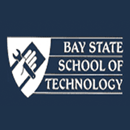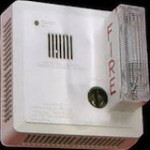Online anytime - Electrical / Electricity Basics Online Anytime
Training Provider: Bay State School of Technology
Online anytime
 No Reviews
No Reviews
We're sorry, but registration for this event has ended
View Upcoming Electrical/Electricity Basics Online Anytime In Online, Live| TICKET TYPE | PRICE | QUANTITY |
|---|---|---|
|
One Workshop Ticket more info» | $499.00 | Registration Ended |
| Registration Ended | ||
Please Note: This is an online anytime course that you will take from the comfort of your own home computer!
Why Should You Take This Electrical/Electricity Basics Online Anytime course?
The need for experienced individuals to repair computers, maintain office building, repair appliances, install heating and air conditioning systems, install cable, and more is ever growing. However, with each of these jobs there is a requirement to be fully knowledgeable of basic electricity and electrical principles.
Who Should Take This Course?
If you are interested in pursuing a career in any electrical/electricty field you should take this course first as it is required by all professions. By learning the fundamentals now you will be gaining a fast track to your career of choice. This Electrical/Electricity Basics Online Anytime course is designed to get you in the door for your first job.
Professions:
- Appliance Service Technicians
- Automobile Mechanics
- Office Machine Technicians (for copiers, faxes, printers, etc.)
- Computer Service Technicians
- Air Conditioning and Refrigeration Technicians
- Alarm Technicians
- Boat Mechanics
- Hotel & Apartment Complex Maintenance Mechanics
- TV & Home Entertainment Sound System Repairers
- Home Owners who want to understand Electricity and Wiring Diagrams
- Medical Equipment Technicians
- Vending Machine Service Technicians
- Hobbyists (Electric Trains and cars, electronics, etc.)
- Anyone working on electro/mechanical equipment
What will You Learn?
Students will study the history of electricity, its origin, its discovery, and development since discovery. The elements of Ohms Law, including voltage, current, and resistance, will be covered and explained. Series and parallel circuits, capacitors, resistors, transformers, motors and switches will be studied. Students will learn to use a multi-meter to measure voltage, current, and resistance, and will also learn to read wiring diagrams.
This online learning electrical/electricity course contains over 800 pages of course material in 8 training segments.
As part of this course students will also receive a Multimeter, Experiment Kit, Sample Circuit Experiments and a 200 page book on "Basic Electricity".
Students can study are their own pace at home following our simple to learn and understand format of training.
This online course is designed with 8 training segments:
- History, Safety, Atomic Structure and Electron Flow
- Voltage, Current, Resistance and Ohms Law
- Introduction to Meters, Voltage Sources, Electrical Circuits and Series Circuits
- Parallel Circuits, Series/Parallel Circuits, Magnetism and Induction
- AC Generation, Transformers and Capacitance
- AC Motors
- Switches, Relays, Solenoids, Fuses and Circuit Breakers
- Wire Size, Power Cords, Receptacles, Plugs, Wire Connectors and Wiring Diagrams
- Final Review
Test Your Computer's Capability! If this online distance learning course interests you, test your computer's ability to access our online educational course with the Computer System Test link below.
Before you click the link, write down the following Username and Password which are necessary to continue and access the online educational course.
Username: System
Password: test
Below are links to several pages of the course material which you will be studying. Each sample page is taken from 8 of online learning segments containing over 800 pages to give you an idea of the depth of the course material. To view the sample pages just click on the links.
I. History, Safety, Atomic Structure
The student will have an appreciation of how long it took man to understand where electricity came from and how it is used. The student can provide a much more in depth explanation of electrical circuit operations.
History Unit #6
Safety Unit #13
Atomic Structure Unit #12
II. Voltage, Current, Resistance
In this lesson the student will learn the mathematical relationship between voltage, current and resistance and explain how Ohm’s Law is still important to this date at any technical level.
The student will calculate basic Ohm’s Law equations that are needed for electrical circuit troubleshooting. This understanding of Ohm’s Law and its uses is the corner stone directly or indirectly for any technical service career.
Voltage Unit #6
Current Unit #8
Resistance Unit #12
III. Power, Meters, Voltage Sources
The student will be able to distinguish between AC and DC voltage sources. Also, the student will understand the requirements of a simple circuit and how AC and DC sources can power that circuit. Finally, the student will learn that power is work done.
The student’s knowledge acquired in this section supports the use of a Multimeter. A Multimeter is a measuring device for voltage, current and resistance. Also, the troubleshooting of simple circuits with a meter is performed.
Power Unit #14
Introduction to Meters Unit #1
Voltage Sources Unit #20
IV. Parallel Circuits, Series Parallel Circuits, Magnetism
The student will understand complex (parallel & series/parallel) circuits and how they are used in various applications. Also, they will learn magnetism and how its effect is used in circuits that require magnetic operations.
The student can use a Multimeter to check the accuracy of parallel and complex electrical circuitry.
Parallel Circuit Unit #55
Series/Parallel Circuit Unit #31
Magnetism Unit #11
V. AC Generation, Transformers, Capacitance
The student will understand how alternating current is generated and know the common waveform used to represent alternating current. Also, the student learns how and why transformers and capacitors are needed in electrical circuits.
The student can use a Multimeter to test and troubleshoot electrical power supply circuitry.
AC Generation Unit #3
Transformer Unit #389
Capacitance Unit #25
VI. AC Motors
The student will understand how a motor turns electrical energy into mechanical energy. Also, the student will be able to name the parts of an AC motor and explain how the AC motor operates.
The student will have the ability to troubleshoot AC motors for proper operation.
AC Motors Unit #17
AC Motors Unit #29
AC Motors Unit #44
VII.Switches, Relays, Solenoids
The student will understand the differences and uses of control and protection devices used in electrical circuits.
The student will be able to check and test various control and protection devices like solenoids, relays, switches, fuses and circuit breakers.
Switches Unit #4
Relays Unit #7
Solenoids Unit #3
VIII. Wires, Power Cords, Receptacles
The student will understand the differences and uses of connectivity devices used in electrical circuits. Also, the student will learn how to use wiring diagrams.
The student will be able to use a wiring diagram to trace electrical problems. Also, the student will be able to check and test various connectivity devices like power cords, receptacles & plugs and wire connectors.
Wire Size Unit #613
Power Cords Unit #11
Wiring Connectors Unit #10
| COURSE LOGISTICS | |
|---|---|
| Certificates | 4-7 Days After Course Completion |
| Food | No food provided |

Bay State School of Technology, Inc. (BSST) is a proprietary (for-profit), co-educational, technical school committed to providing students with an accelerated and thoroughly comprehensive training program in the servicing of Major Appliances, Domestic and Commercial HVACR and Electronics Technician. The School’s blend of “hands-on, learn by doing†approach to training, and classroom theory under the guidance of its highly trained professional instructors, has proven to be successful in preparing its graduates for the demands of industry. BSST graduates are equipped with the background and training required to make a smooth transition from learning in the classroom to working in the field as entry-level technicians, and to qualify for advancement in a growing industry. BSST is dedicated to providing up-to-date training which keeps pace with a changing industry.

Questions? 954-400-0595


